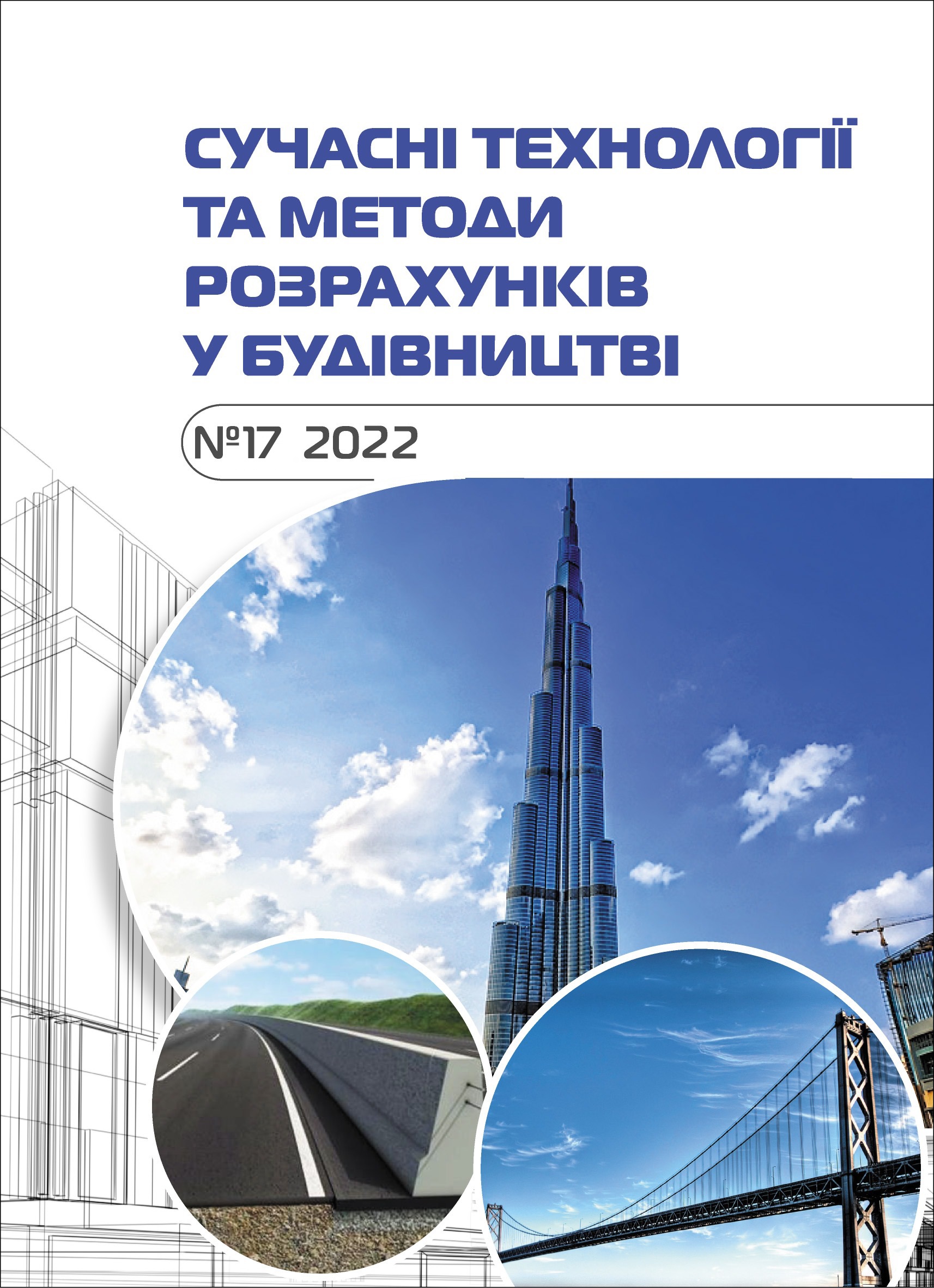Calculation of the existing structure of the reinforced concrete frame of the sports hall of the volyn regional organization pss "dynamo" for the installation of the mast of the base station of mobile communication
Abstract
Research and Construction Laboratory at the Department of Civil Engineering and Civil Engineering of Lutsk National Technical University conducted a technical inspection of the gym of the Volyn regional organization FST "Dynamo", on the street. Danyla Halytskoho 33, in the city of Lutsk, Volyn region. As a result of technical inspection and assessment of the condition of reinforced concrete frame frames and roof construction, prefabricated reinforced concrete hollow core slabs, a conclusion was made on compliance with technical requirements for the category of technical condition "1". We performed a static calculation to test the possibility of loading the existing building structure with additional load from the mast of the mobile base station. A design scheme has been developed, which consists of the existing frame of the building and the tower of the base station of PJSC Kyivstar, which is located on the roof. Static calculation of the reinforced concrete structure of the frame frame was performed in the software package "Lira-CAD". The calculation was performed from the constant, variable (snow) load of the existing building, and from the constant load (from a mast weighing 2.0 tons and a height of H - 15.0 m), variable (wind) load. A feature of the design scheme is the presence of beam elements at the same time, in which there are bending moments, transverse forces, longitudinal forces, and extensions that work only on longitudinal tension. As a result of the action of wind load, the vertical structure of the mast, in addition to its own weight of the structure, additionally, through extensions, receives a vertical load, which is transmitted to the foundation of the mast and hence to the frame.
The obtained results show that the internal stresses that occur in the cross sections of the frame do not exceed the stresses provided by the reliability factor.
The load-bearing capacity of the frame is sufficient, even with additional load from the mast, provided that the design decisions are anticipated and followed in terms of fixing and compensating for dynamic wind loads.








